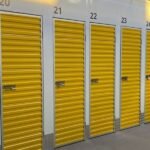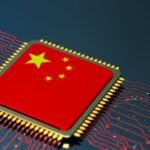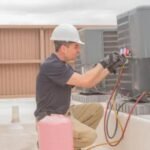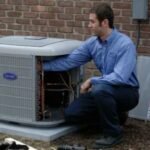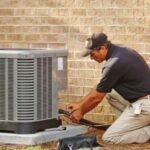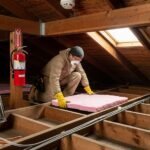Electrical overloads are a common issue in modern households, particularly in homes with aging wiring or increasing demand from electronics and appliances. While many people may ignore early signs of trouble, doing so can pose real dangers, including fire hazards and damage to valuable equipment. Learning to detect the warning signs of an overload and knowing how to respond appropriately is essential for maintaining both safety and efficiency. We will explore how homeowners can recognize the symptoms of electrical overloads, why these issues occur, and how they can be addressed before they turn into serious problems.
Recognizing the Signs and Finding Practical Solutions
Understand What an Electrical Overload Is
Before jumping to solutions, it’s important to first understand what constitutes an electrical overload. Simply put, an overload happens when the electrical demand on a circuit exceeds its capacity. Every circuit in your home is rated to handle a certain number of amps. When you plug in multiple appliances—especially energy-hungry ones—on a single circuit, you risk exceeding its limit. Over load can cause circuit breakers to trip or fuses to blow, which is a safety feature preventing overheating and potential fire. Still, repeated tripping is not normal and shouldn’t be ignored. Overloads may not always be dramatic; sometimes they appear subtly as flickering lights, warm outlets, or buzzing sounds near your switches. If you’re unsure about the cause or want a thorough inspection, contacting your local Vancouver electrician can help ensure your system is safe and performing within its limits.
These indicators should never be overlooked. Knowing the cause behind the overload is half the battle. In many homes, issues arise from adding modern devices to outdated systems or from using too many power strips and extension cords. A single high-powered appliance, such as a space heater or hairdryer, can quickly overload a circuit if it is already carrying a moderate load. Recognizing that your home’s circuits have limits will help you manage devices more consciously and distribute usage more effectively.
Watch for Frequent Circuit Breaker Trips
One of the clearest signs of an electrical overload is a circuit breaker that keeps tripping. Circuit breakers are designed to protect your home from excess current by automatically shutting off when the load exceeds the wiring’s capacity. If you find yourself going to the electrical panel multiple times a week to reset the same breaker, it’s more than just an inconvenience—it’s a signal of something deeper. Some homeowners mistakenly assume breakers are just faulty, but consistent tripping is rarely a mechanical issue. It usually indicates a real overload or wiring issue. Take note of when and where the tripping occurs. Does it happen when the microwave and toaster are used together? Or does it happen when both the AC and vacuum are running? These patterns can help you identify which circuit is under too much stress.
Labeling your breaker box can help you clearly map which outlets correspond to which circuits, making it easier to diagnose issues. Once you’ve identified the overloaded circuit, try limiting the number of appliances running on it simultaneously, or consider moving some devices to a different circuit that isn’t already at capacity. If these steps don’t resolve the problem, the issue may lie with the circuit itself, signaling the need for an upgrade. For such upgrades, consult a Westlake electrician or another licensed professional in your area.
Pay Attention to Unusual Electrical Behavior
Electrical overloads don’t always present as obviously as tripped breakers. Occasionally, they appear as minor irregularities that accumulate over time. For example, if your lights dim or flicker when you plug in a certain device, that’s a red flag. Similarly, outlets that feel warm to the touch or produce a faint burning smell could be warning signs of a circuit that’s operating beyond its safe limit. These clues suggest that your wiring is struggling and needs attention. Another behavior to monitor is the occurrence of unusual buzzing or humming sounds from switches, outlets, or electrical panels. These noises can occur when wires vibrate due to excessive current. Left unchecked, this can damage insulation and increase the risk of fire.
Static or inconsistent power to devices, such as televisions or laptops, randomly shutting off, could also be the result of overloaded or faulty circuits. Being observant helps you act before damage is done. If you’re hearing or seeing signs that circuits are overworked, don’t chalk it up to “old house quirks.” These symptoms indicate the need to reassess how your home’s electricity is being distributed and whether the current infrastructure can support your needs. In many cases, this means considering a more modern electrical panel, particularly if your home is more than 20 years old and still relying on a system built for fewer appliances.
Preventing electrical overloads is more about maintaining ongoing awareness of your home’s electrical health than it is about one-time fixes. By understanding the signs—whether they’re frequent breaker trips, warm outlets, flickering lights, or just too many devices on one circuit—you can take action before those issues escalate. Your home’s electrical system should evolve with your lifestyle, and by staying attentive, you ensure it operates safely and reliably. Thoughtful planning now can help you avoid hazards, protect your property, and keep everything running smoothly for years to come.






